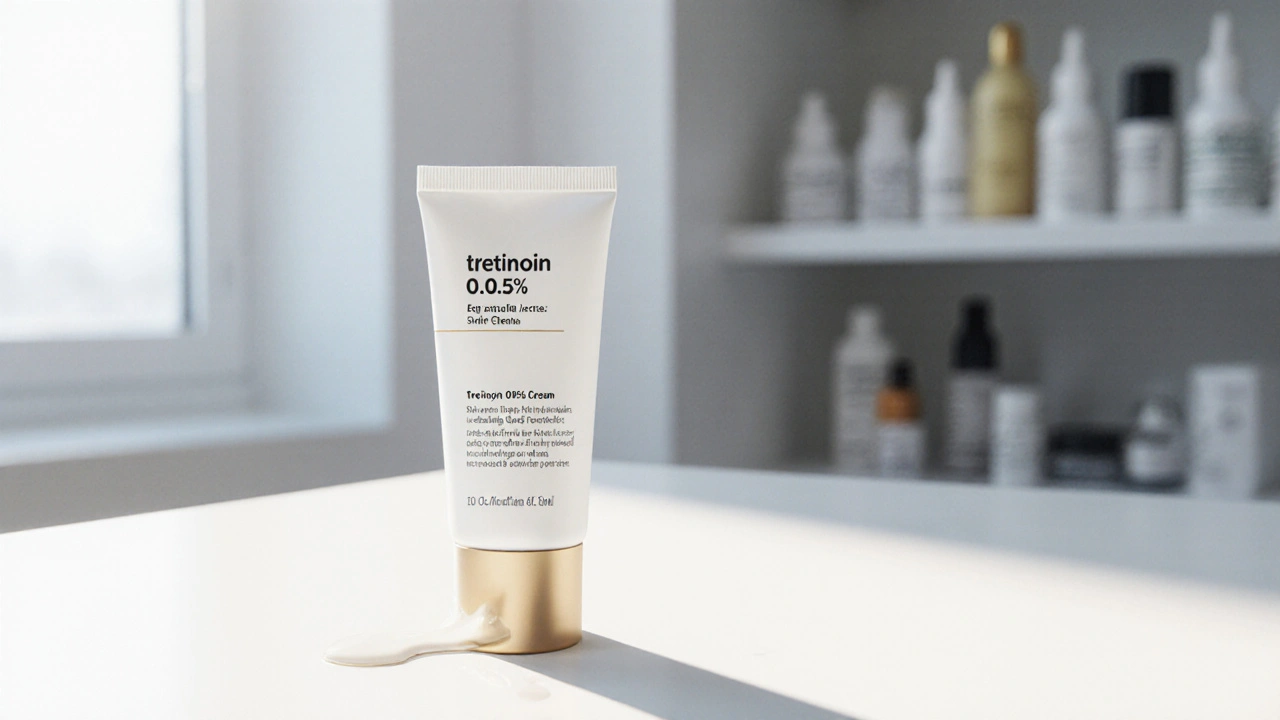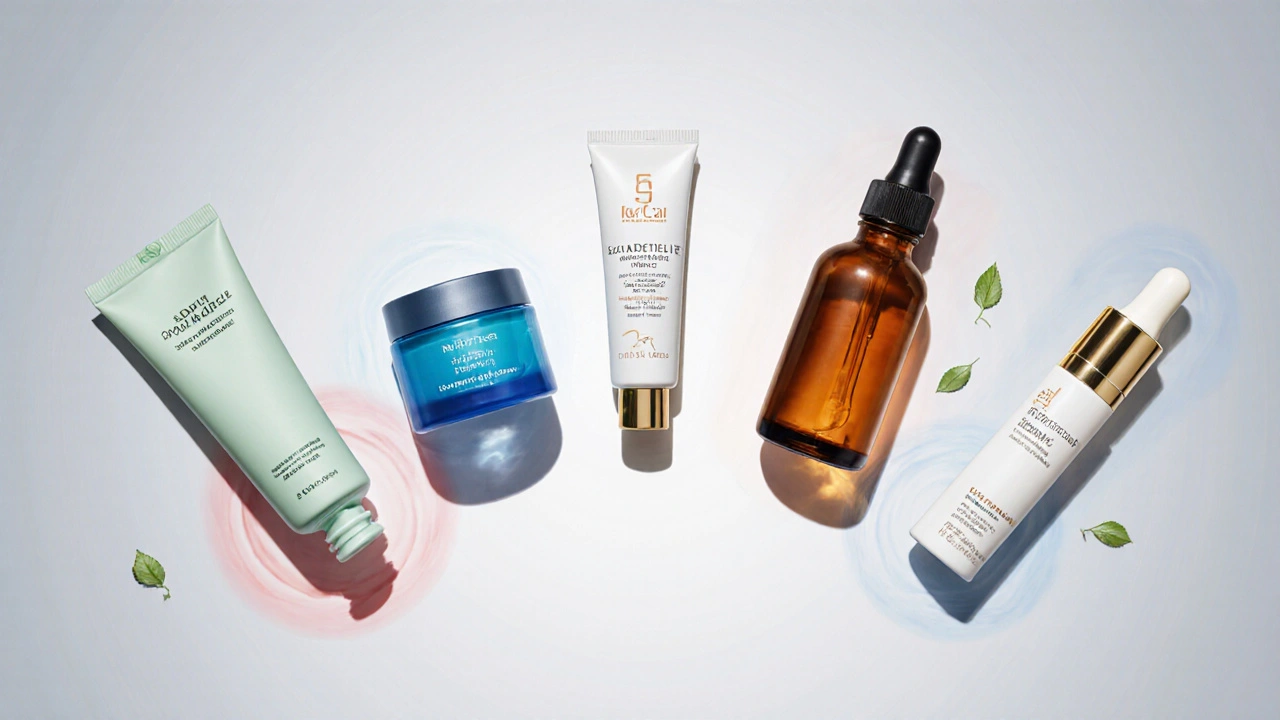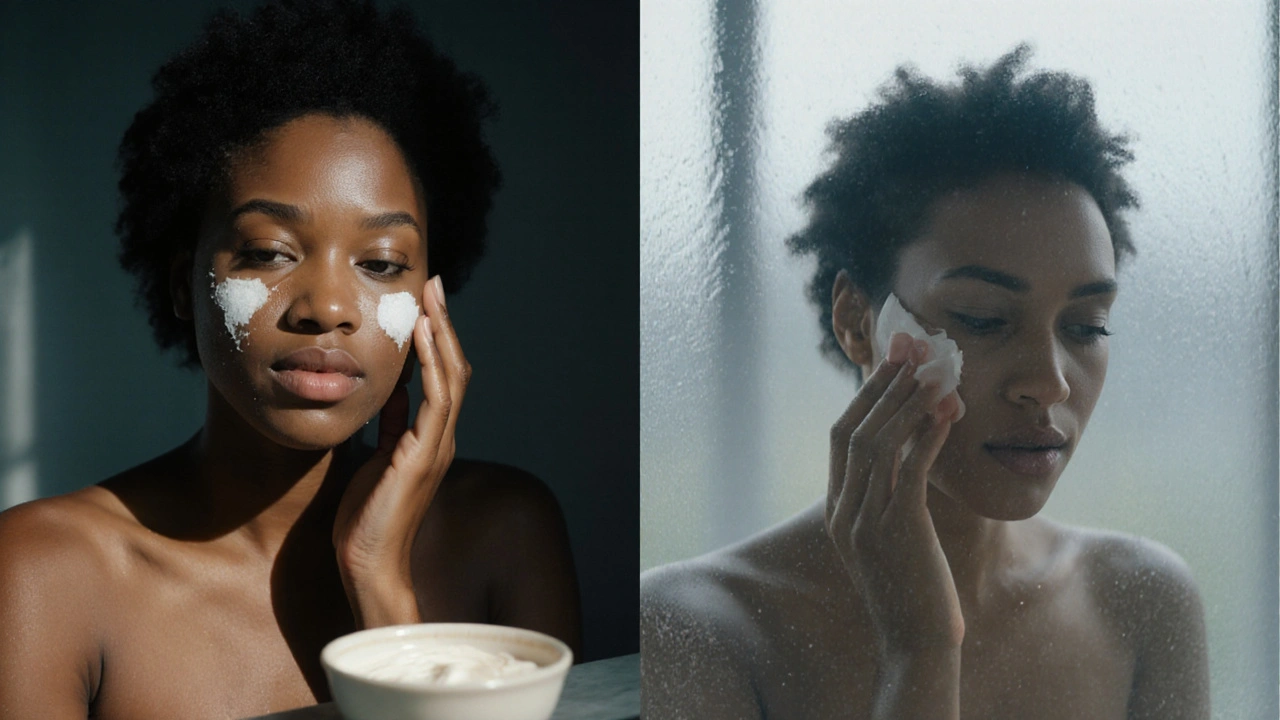Tretinoin 0.05% vs Common Alternatives: Benefits, Drawbacks, and Choosing the Right Retinoid

Retinoid Matchmaker
Find Your Perfect Retinoid
Answer a few simple questions about your skin to get a personalized recommendation for the best retinoid for your needs.
Why this choice?
When it comes to treating acne, fine lines, or hyperpigmentation, Tretinoin 0.05% is often called the gold standard. It’s a prescription‑only retinoid that speeds up cell turnover and boosts collagen production. But it’s not the only player on the market, and many people wonder if a milder or over‑the‑counter option might work just as well for their skin type.
Quick Takeaways
- Tretinoin 0.05% offers the strongest proven results for acne and anti‑aging, but it can irritate sensitive skin.
- Adapalene (0.1% or 0.3%) is an OTC retinoid that is gentler and easier for beginners.
- Tazarotene (0.05% cream or gel) is even more potent than tretinoin but comes with a higher risk of dryness.
- Retinol, the over‑the‑counter cousin of tretinoin, works slower but is suitable for those who can’t tolerate prescription retinoids.
- Combination therapies such as benzoyl peroxide or azelaic acid can boost effectiveness while reducing irritation.
What Is Tretinoin 0.05%?
In simple terms, tretinoin is a synthetic form of vitamin A‑acid (all‑trans‑retinoic acid). At a 0.05% concentration, it is strong enough to remodel skin but still manageable for most adults when introduced gradually. Typical uses include:
- Reducing inflammatory and comedonal acne.
- Fading post‑inflammatory hyperpigmentation.
- Softening fine lines and improving overall texture.
Its mechanism relies on binding to nuclear retinoic‑acid receptors (RARs), which then turn on genes that increase collagen synthesis and push older skin cells out of the pore lining. The result is a clearer, smoother surface, usually noticeable after 8‑12 weeks of consistent use.

How Tretinoin Stacks Up Against Other Retinoids
Below are the most common alternatives you’ll encounter at pharmacies or online. Each has its own strengths, side‑effect profile, and price point.
Adapalene is a third‑generation synthetic retinoid approved for over‑the‑counter sale in 0.1% and 0.3% creams. It targets the same RAR‑β receptor but does so more selectively, which means less irritation for most users.
- Concentration: 0.1% (OTC) or 0.3% (OTC).
- Typical use: Mild to moderate acne, first‑line for beginners.
- Side effects: Mild redness, occasional peeling.
Tazarotene is a prescription‑only retinoid available in 0.05% cream or gel. It binds to both RAR‑α and RAR‑β, delivering a stronger cellular turnover than tretinoin.
- Concentration: 0.05% (cream or gel).
- Typical use: Severe acne, psoriasis, advanced photo‑aging.
- Side effects: Pronounced dryness, peeling, and potential sun sensitivity.
Retinol is the over‑the‑counter parent molecule of tretinoin. Your skin must convert it to retinoic acid, a process that can be slow and varies with age.
- Concentration: Typically 0.25%-1% in serums.
- Typical use: Gentle anti‑aging, early‑stage acne.
- Side effects: Minimal irritation for most; effectiveness builds over months.
Benzoyl Peroxide isn’t a retinoid, but it’s frequently paired with them. It works by killing acne‑causing bacteria and reducing oil production.
- Concentration: 2.5%-10% gels or creams.
- Typical use: Spot treatment, acne maintenance.
- Side effects: Dryness, bleaching of fabrics.
Azelaic Acid is a dicarboxylic acid that offers anti‑inflammatory and keratolytic benefits, useful for both acne and rosacea.
- Concentration: 10%-20% creams.
- Typical use: Reducing redness, fading post‑inflammatory marks.
- Side effects: Mild tingling or dryness.
Side‑By‑Side Comparison
| Feature | Tretinoin 0.05% | Adapalene 0.1‑0.3% | Tazarotene 0.05% | Retinol (0.5‑1%) |
|---|---|---|---|---|
| Prescription status | Prescription only | OTC | Prescription only | OTC |
| Primary mechanism | All‑trans retinoic acid - broad RAR activation | Selectively binds RAR‑β | Dual RAR‑α/β activation - high potency | Must convert to retinoic acid in skin |
| Typical onset of results | 4‑6 weeks noticeable, 12 weeks optimal | 6‑8 weeks | 2‑4 weeks (often more irritation) | 8‑12 weeks (gradual) |
| Common side effects | Redness, peeling, photosensitivity | Mild redness, occasional scaling | Severe dryness, peeling, irritation | Very low irritation, slower irritation onset |
| Best for | Moderate‑to‑severe acne, deep wrinkles | First‑time retinoid users, mild acne | Severe acne, psoriasis, experienced retinoid users | Early‑stage aging, sensitive skin |
Choosing the Right Retinoid for Your Skin
There’s no one‑size‑fits‑all answer. Think about three practical factors before you pick a product.
- Skin sensitivity: If you notice burning with your first wash, start with adapalene or a low‑percentage retinol. Tretinoin and tazarotene demand a gentle starter routine (e.g., twice a week).
- Treatment goal: For fast acne clearance, tretinoin or tazarotene works best. For gradual anti‑aging with minimal flare‑ups, retinol or low‑dose adapalene is smarter.
- Budget and convenience: Prescription retinoids cost more and need doctor visits. OTC options like adapalene and retinol are cheaper and easy to buy.
Most dermatologists recommend a “retinoid ladder” - start low, monitor, then step up if your skin tolerates it. For example, begin with adapalene 0.1% every other night, add a moisturizer, and after 4‑6 weeks consider moving to tretinoin 0.05% if you’re comfortable.

How to Use Tretinoin (or Any Retinoid) Safely
- Cleanse gently. Use a sulfate‑free cleanser and pat dry.
- Apply a pea‑sized amount. Spread thinly across the entire face, avoiding the eye area.
- Start slow. Begin with 2‑3 nights per week. Increase frequency by one night every 1‑2 weeks as tolerance builds.
- Moisturize. Wait 15‑20 minutes after applying the retinoid, then lock in hydration with a ceramide‑rich cream.
- Protect. Every morning, use a broad‑spectrum SPF 30+; retinoids make skin more UV‑sensitive.
- Watch for irritation. If redness exceeds mild flushing, cut back to every other night and consider a lower concentration.
Those steps work for tretinoin, adapalene, tazarotene, and retinol alike - the only change is the concentration you start with.
Frequently Asked Questions
Can I use tretinoin and benzoyl peroxide together?
Yes, but separate them. Apply benzoyl peroxide in the morning and tretinoin at night. This avoids the two chemicals neutralizing each other and reduces irritation.
How long does it take to see results with tretinoin 0.05%?
Most people notice smoother skin and fewer breakouts after 4‑6 weeks, with maximum benefit appearing around 12 weeks of consistent use.
Is retinol as effective as tretinoin for acne?
Retinol works, but it’s slower because it must be converted to active retinoic acid. For moderate‑to‑severe acne, tretinoin usually gives faster, stronger results.
Can pregnant women use any of these retinoids?
No. All retinoids, including tretinoin, adapalene, tazarotene, and high‑dose retinol, are contraindicated during pregnancy due to potential birth‑defect risk.
What’s the best moisturizer to pair with tretinoin?
Pick a fragrance‑free, non‑comedogenic cream with ceramides or hyaluronic acid. Applying it after the retinoid (or using the “sandwich” method - moisturizer, retinoid, moisturizer) helps lock in moisture and calm irritation.
Bottom Line
If you can tolerate it, Tretinoin vs alternatives ends up being a trade‑off between speed and comfort. Tretinoin 0.05% delivers the fastest, most dramatic results for acne and aging, but it demands patience, a solid moisturizing routine, and diligent sunscreen use. For beginners or those with very sensitive skin, starting with adapalene or a low‑dose retinol lets you build tolerance before stepping up to a stronger prescription.
Remember, the best retinoid is the one you’ll use consistently without driving yourself crazy. Test a small patch, track how your skin reacts, and adjust the concentration or frequency accordingly. With the right approach, any of these options can give you clearer, smoother skin.

Megan C.
October 12, 2025 AT 20:08If you’re not willing to treat your skin responsibly, you’re doing yourself a disservice. Prescription retinoids demand a disciplined routine, consistent moisturization, and unwavering sunscreen use.
Lydia Conier
October 23, 2025 AT 14:08Hey folks, just wanted to throw some encouragement your way while you navigate the retinoid jungle. Start slow-maybe twice a week-and watch how your skin reacts before upping the frequency. Remember to pair your tretinoin with a gentle, fragrance‑free moisturizer; it’ll help keep that dreaded peeling at bay. Don’t be shy about doing a patch test; a tiny dab on your jawline for a few days can save you a lot of irritation later. And yes, it’s totally okay to feel a little “burn” the first few times-your skin is just adjusting. If you notice intense redness, pull back a night and give it a breather. Also, sunscreen isn’t optional-it’s the non‑negotiable partner in this relationship. Lastly, stay patient: visible results often pop up after 8‑12 weeks, not days. Good luck, and happy skin‑journey! (typo alert: dont forget to reapply sunscreen)
ruth purizaca
November 3, 2025 AT 08:08Your skin will thank you when you finally cut the hype.
Shelley Beneteau
November 14, 2025 AT 02:08Building on what was mentioned, the conversion rate of retinol to retinoic acid can vary greatly with age and skin barrier health. People with a compromised barrier may see less benefit from low‑dose retinol and might need a prescription option sooner. It’s also worth noting that dietary vitamin A intake can subtly influence overall tolerance.
Sonya Postnikova
November 24, 2025 AT 20:08You’ve got this! :) Just remember that consistency beats intensity every time.
Anna Zawierucha
December 5, 2025 AT 14:08Oh great, another “miracle” cream claim-because we all love spending extra on something that could’ve been a cheap moisturizer. If you’re looking for fireworks, grab the high‑strength prescription; if you’re after a subtle glow, the OTC retinol will do. Either way, your bank account will feel the burn.